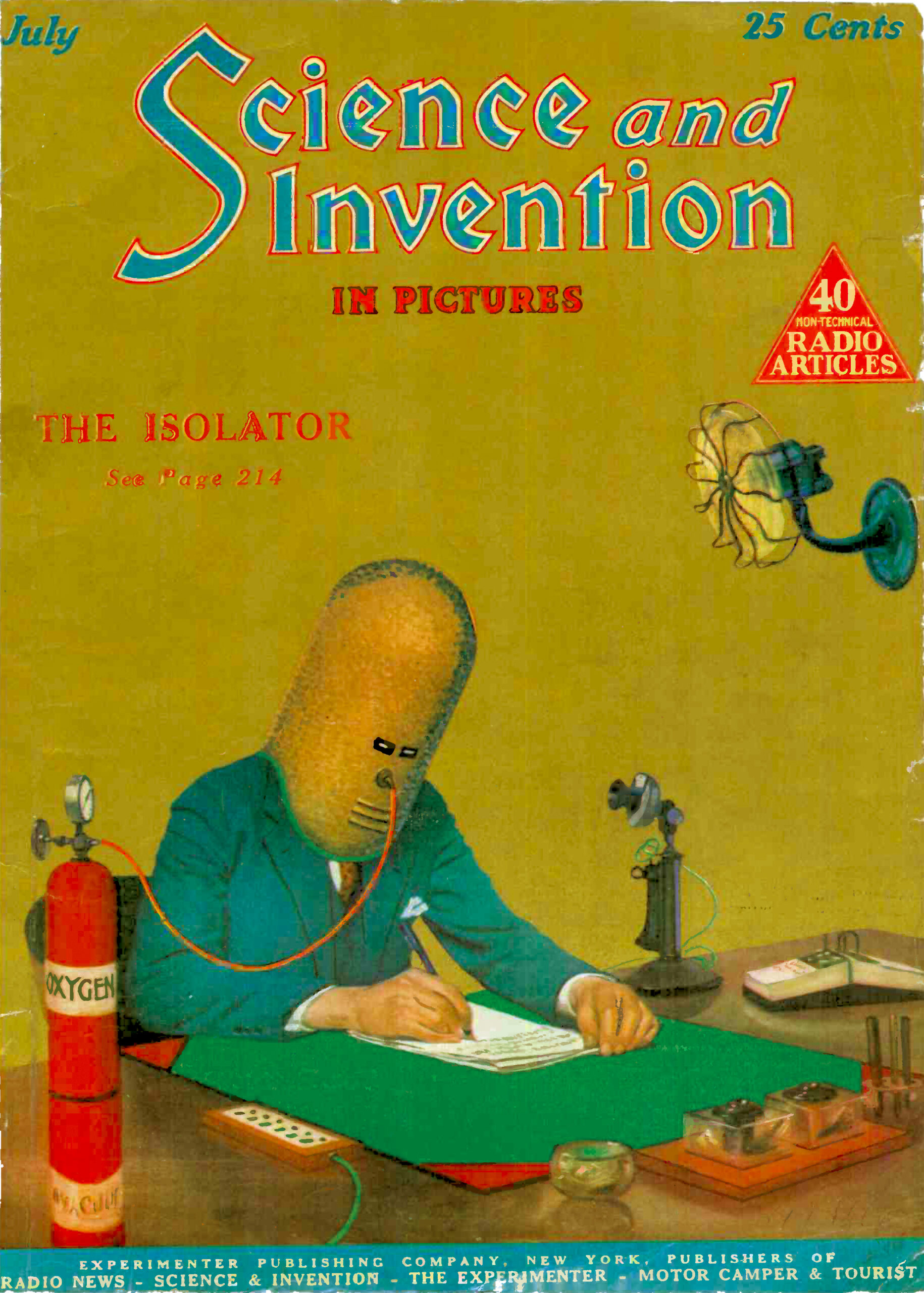[Most Recent Entries] [Calendar View]
Monday, May 3rd, 2021
| Time | Event |
| 7:52a | Get 30-Day Free Access to a Udacity Nanodegree Program & Start Learning for Free
FYI: Until May 23, you can have 30-day free access to a Udacity Nanodegree program and start learning for free. Popular Udacity Nanodegree subjects include: Intro to Programming, Become a Product Manager, Become a Data Scientist, Digital Marketing, and Become a Data Analyst. But there are many more subjects to choose from. The deal is open to residents of the United States and most other countries around the globe, with the exception of India, Brazil, Bahrain, Egypt, Jordan, Kuwait, Morocco, Oman, Qatar and Saudi Arabia. Residents of those countries can get 60% off the entire Udacity site through May 31 by using the SCHOOLOFCYBER60 code at checkout. Note: Open Culture has a partnership with Udacity. If readers enroll in certain Udacity courses and programs, it helps support Open Culture. Related Content: 200 Online Certificate & Microcredential Programs from Leading Universities & Companies. Get 30-Day Free Access to a Udacity Nanodegree Program & Start Learning for Free is a post from: Open Culture. Follow us on Facebook and Twitter, or get our Daily Email. And don't miss our big collections of Free Online Courses, Free Online Movies, Free eBooks, Free Audio Books, Free Foreign Language Lessons, and MOOCs. |
| 8:00a | Magnus Carlsen’s Mind-Blowing Memory of Historic Chess Matches How many historic chess games can Magnus Carlsen recognize just by looking at the placement of chess pieces on the board? It turns out a lot. And that’s partly what makes him the reigning World Chess Champion. Would you like to support the mission of Open Culture? Please consider making a donation to our site. It’s hard to rely 100% on ads, and your contributions will help us continue providing the best free cultural and educational materials to learners everywhere. Also consider following Open Culture on Facebook and Twitter and sharing intelligent media with your friends. Or sign up for our daily email and get a daily dose of Open Culture in your inbox. Related Content Learn How to Play Chess Online: Free Chess Lessons for Beginners, Intermediate Players & Beyond A Free 700-Page Chess Manual Explains 1,000 Chess Tactics in Straightforward English A Beautiful Short Documentary Takes You Inside New York City’s Last Great Chess Store A Brief History of Chess: An Animated Introduction to the 1,500-Year-Old Game Vladimir Nabokov’s Hand-Drawn Sketches of Mind-Bending Chess Problems The Magic of Chess: Kids Share Their Uninhibited, Philosophical Insights about the Benefits of Chess Garry Kasparov Now Teaching an Online Course on Chess Magnus Carlsen’s Mind-Blowing Memory of Historic Chess Matches is a post from: Open Culture. Follow us on Facebook and Twitter, or get our Daily Email. And don't miss our big collections of Free Online Courses, Free Online Movies, Free eBooks, Free Audio Books, Free Foreign Language Lessons, and MOOCs. |
| 2:00p | The Story of the Rolling Stones: A Selection of Documentaries on the Quintessential Rock-and-Roll Band The Rolling Stones define the rock-and-roll band, as they have for nearly six decades now. Exactly how they’ve done so is thoroughly documented, not least by the band’s own expansive and still-growing catalog of songs and albums (all of which I happen to have spent the last few months listening through). But the story of the Stones continues to compel, told and re-told as it is in every form of media produced by each era through which the band has passed: books, articles, podcasts, and also the sort of documentaries we’ve collected here today. Some were originally produced for television; others, like WatchMojo’s “The Rolling Stones: The Story & the Songs” above, for the internet. Each of them addresses the same question: how did a couple of blues-obsessed lads from Kent come to run the biggest rock group in the world? Even when straightforwardly presented, as in the Biography broadcast above, the history of the Rolling Stones constitutes a pop-cultural thrill ride. It begins, by most accounts, with former classmates Mick Jagger and Keith Richards bumping into each other at a train station in 1961. Their shared interest in music, and especially American blues, inspired them to put a band together. Before long, Jagger and Richards’ Blues Boys made the acquaintance of another band, Blues Incorporated, whose members included Brian Jones, Ian Stewart and Charlie Watts. Though Watts wouldn’t join up until later, the other four constituted most of the first lineup of the Rolling Stones, who made their debut at London’s Marquee Club in July 1962. You can see a great deal of archive footage depicting the Stones in their early years in the documentary above, Rolling Stones: Rock of Ages. The title implies an obvious and much-repeated joke about the once-rebellious youngsters’ insistence on rocking into relatively advanced age. But onstage — and the live performance has always been essential to their appeal, more so even than their albums — they remain very much the same band once promoted with the question “Would you let your sister go with a Rolling Stone?” That line was only one of the strategies used by its author, the Stones’ first manager Andrew Loog Oldham, to launch his boys into worldwide popularity by framing them as the brash opposite of the Beatles — to whom, despite their considerable musical differences, one can hardly avoid making reference in the story of the Stones. Though the bands became fast friends in real life, the press of the 1960s couldn’t resist crafting a rivalry, as recounted in The Beatles vs. The Rolling Stones, the Canal+ documentary above. Whatever competition existed between them (or with American bands like the Beach Boys) only encouraged them to make their music more powerful and distinctive. This they did in the face of countless personal and professional setbacks, which for the Stones included the loss of founding member Brian Jones and the violent Altamont Free Concert, widely interpreted as the end of the utopian 1960s. As products and survivors of that era, the Stones also remain embodiments of its insouciant ambition. “For my generation, what was happening and the feeling in the air was: it’s time to push limits, says no less a survivor than the subject of Keith Richards: The Origin Of The Species. “The world is ours now, and you can rise or fall on it.” Related Content: A Visual History of The Rolling Stones Documented in a Beautiful, 450-Page Photo Book by Taschen The Rolling Stones at 50: Mick, Keith, Charlie & Ronnie Revisit Their Favorite Songs Based in Seoul, Colin Marshall writes and broadcasts on cities, language, and culture. His projects include the Substack newsletter Books on Cities, the book The Stateless City: a Walk through 21st-Century Los Angeles and the video series The City in Cinema. Follow him on Twitter at @colinmarshall or on Facebook. The Story of the Rolling Stones: A Selection of Documentaries on the Quintessential Rock-and-Roll Band is a post from: Open Culture. Follow us on Facebook and Twitter, or get our Daily Email. And don't miss our big collections of Free Online Courses, Free Online Movies, Free eBooks, Free Audio Books, Free Foreign Language Lessons, and MOOCs. |
| 5:00p | The Isolator: A 1925 Helmet Designed to Eliminate Distractions & Increase Productivity (Created by SciFi Pioneer Hugo Gernsback)
The anti-distraction device is the modern mousetrap: build a better one, and the world will beat a path to your door. Or so, at least, will the part of the world engaged in the pursuits we’ve broadly labeled “knowledge work.” Even among the knowledge workers who’ve spent most of the past year in pandemic-prompted isolation, many still feel besieged by unending claims on their attention. Laments at having been rendered unproductive by constant distraction go back at least to medieval times, but the proposed solutions to this long-standing problem change with — and reflect — the times. Take the “Isolator,” the formidable-looking wearable machine above that debuted on the cover of July 1925’s Science and Invention magazine. “Perhaps the most difficult thing that a human being is called upon to face is long, concentrated thinking,” writes inventor Hugo Gernsback in the accompanying article. “Most people who desire thus to concentrate find it necessary to shut themselves up in an almost soundproof room in order to go ahead with their work, but even here there are many things that distract their attention.” Even absent such nuisances as “street noises” and the “telephone bell,” the mind seeks out its own distractions as if naturally compelled: “You will lean back in your chair and begin to study the pattern of the wallpaper, or you will see a fly crawl along the wall, or a window curtain will be moving back and forth, all of which is often sufficient to turn your mind away from the immediate task to be performed.”
Gernsback’s solution involves a large helmet, lined with cork and covered in felt, with a baffle for breathing and glass eyeholes to see through. Painted black but for two thin bands, the eyeholes make it “almost impossible to see anything except a sheet of paper in front of the wearer. There is, therefore, no optical distraction here.” To prevent drowsiness, “the writer introduced a small oxygen tank, attached to the helmet. This increases the respiration and livens the subject considerably.” And so we arrive at the setup pictured below, originally captioned, “The author at work in his private study aided by the Isolator. Outside noises being eliminated, the worker can concentrate with ease upon the subject at hand.” The Isolator’s patent appears just above, one of 80 for various inventions that Gernsback held in his lifetime.
Whatever the device contributed to Gernsback’s productivity, there can be no question that the man got a lot done. Not just a contributor to Science and Invention but also its publisher, he oversaw a small media empire whose other periodicals included Everyday Science and Mechanics, Scientific Detective Monthly, the sinister-sounding Technocracy Review, and Amazing Stories, which launched in 1926 as the first magazine devoted entirely to science fiction (or “scientifiction,” as Gernsback called it). For his advancement of the genre he was honored by the World Science Fiction Society’s Annual Achievement Awards, better known as the “Hugos.” Pulp-fictional though the Isolator may have looked in 1925 (as indeed it looks now), it represents a genuine effort to alleviate with technology a bothersome aspect of the human condition — and a precedent for the new-and-improved isolation helmets engineered for the even more distracting world in which we live a century on. Related Content: How to Focus: Five Talks Reveal the Secrets of Concentration The Benefits of Boredom: How to Stop Distracting Yourself and Get Creative Ideas Again Medieval Monks Complained About Constant Distractions: Learn How They Worked to Overcome Them What Happens When You Spend Weeks, Months, or Years in Solitary Confinement Based in Seoul, Colin Marshall writes and broadcasts on cities, language, and culture. His projects include the Substack newsletter Books on Cities, the book The Stateless City: a Walk through 21st-Century Los Angeles and the video series The City in Cinema. Follow him on Twitter at @colinmarshall or on Facebook. The Isolator: A 1925 Helmet Designed to Eliminate Distractions & Increase Productivity (Created by SciFi Pioneer Hugo Gernsback) is a post from: Open Culture. Follow us on Facebook and Twitter, or get our Daily Email. And don't miss our big collections of Free Online Courses, Free Online Movies, Free eBooks, Free Audio Books, Free Foreign Language Lessons, and MOOCs. |
| << Previous Day |
2021/05/03 [Calendar] |
Next Day >> |








